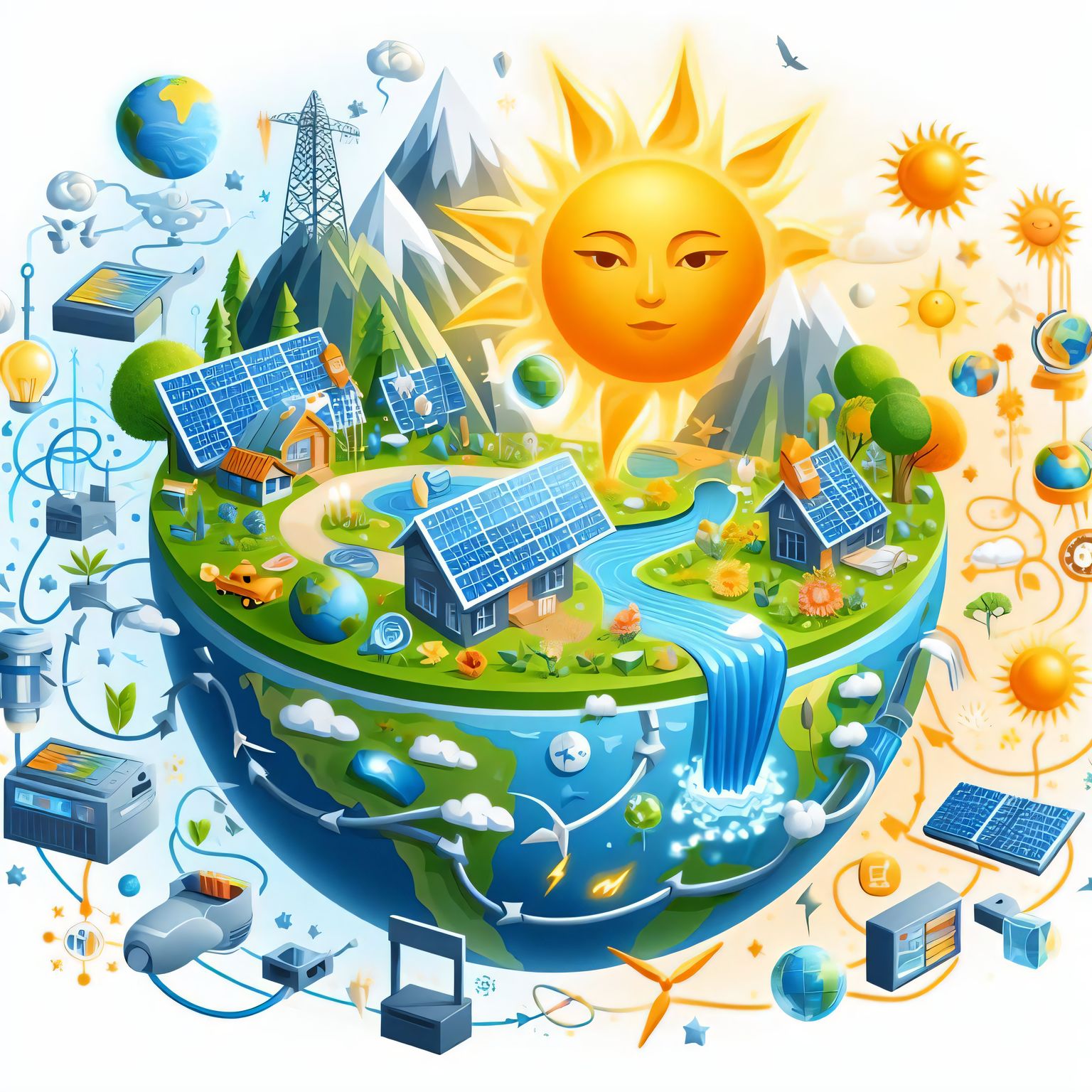Remote work has skyrocketed in recent years. Avoiding daily commutes inherently makes working from home more sustainable. But even remote professionals want to further minimize their environmental footprints. Emerging technologies now offer powerful climate solutions that align with our digital lives. Welcome to the world of digital sustainability.
What is Digital Sustainability?
Digital sustainability involves utilizing technologies like artificial intelligence (AI), blockchain, sensors and the Internet of Things (IoT) to advance sustainability goals. These digital innovations allow both businesses and individuals to reduce their environmental impacts and make climate-friendly choices.
Let’s explore some key technologies advancing sustainability and simple tips for remote workers to leverage them.
How Blockchain Boosts Climate Accountability and Transparency
You likely know blockchain as the decentralized ledger underlying cryptocurrencies like Bitcoin. But blockchain has groundbreaking environmental applications as well. Its ability to create permanent, transparent records enables greater climate accountability.
One company using blockchain for ecological good is Plastic Bank. Plastic Bank establishes recycling centers in coastal communities to empower locals to collect plastic waste in exchange for digital tokens. Collectors can then redeem these tokens for necessities like cooking fuel, wifi access and school tuition. The collected plastic gets recycled before it pollutes oceans.
Plastic Bank tokens are issued on blockchain. This allows traceability to guarantee the plastic is properly processed. It also enables corporations that partner with Plastic Bank to accurately report their recycled ocean plastic usage. For instance, SC Johnson uses Plastic Bank’s blockchain system to transparently account for the recycled content in their Windex bottles.
Another sustainability startup using blockchain is Nori. Nori has created a voluntary carbon marketplace where individuals and companies can purchase carbon removal certificates to offset their emissions. These certificates fund direct air capture facilities that suck CO2 from the atmosphere. Each NORI token represents one ton of removed carbon dioxide. Tokens are issued on blockchain to provide transparency around funding flows and ensure carbon accounting integrity.
By backing sustainability actions with blockchain tokens, these startups provide accountability. The immutable ledger prevents double counting or spending certificates. The transparency enables consumers, investors and regulators to clearly verify environmental claims.
Satellite Data: A Powerful Tool for Forest Conservation and Monitoring
Preserving forests is crucial for biodiversity protection, carbon sequestration and indigenous community rights. Digital remote sensing technologies are now enabling real-time forest monitoring to prevent illegal logging, biomass burning and unauthorized land conversion. This satellite data assists sustainability efforts ranging from government policy to corporate supply chain tracking.
Take the online platform Global Forest Watch as an example. Global Forest Watch ingests trillions of satellite data points combined with artificial intelligence algorithms to generate interactive maps showing forest change and tree cover loss in near real-time. Anyone with internet access can visually monitor deforestation patterns worldwide. This transparency helps hold logging and agricultural companies accountable if they clear protected areas.
Global Forest Watch’s tree cover loss data has assisted over 300 governmental agencies tasked with forest preservation. The Democratic Republic of Congo used the platform’s satellite analytics to see illegal logging was depleting the world’s second largest tropical rainforest. In response, they rapidly delimited and registered over 10 million hectares of forest to Indigenous and community lands.
Meanwhile through supply chain tracking platforms like Trase and Global Forest Watch Pro, consumer brands can validate whether their soy or palm oil is linked to deforestation. Unilever uses satellite imagery to monitor all its agricultural suppliers globally for risks of habitat destruction. Digital remote sensing makes transparent, ethical sourcing viable even from afar.
IoT for Sustainability: How Smart Cities Reduce Environmental Impacts
You likely associate the Internet of Things (IoT) with futuristic smart homes where your refrigerator orders your milk. But IoT sensors connected to cloud analytics platforms also offer immense potential for sustainable infrastructure.
One city using IoT to become an eco-metropolis is Barcelona, Spain. Barcelona has installed over 20 IoT applications across the urban environment. Smart streetlights detect pedestrian traffic to optimize lighting needs. Sensors track waste bin fill levels so garbage trucks only collect bins that need emptying. Parking spots have occupancy detectors syncing real-time availability to mobile apps. Environmental sensors monitor pollution and noise.
These and other networked IoT devices help Barcelona reduce grid energy consumption over 20% and shrink carbon emissions by over 30,000 tons annually. The city estimates efficiency savings of $58 million each year from interventions guided by IoT data analysis. Barcelona also opens their real-time IoT data to researchers and startups, catalyzing further urban sustainability innovation.
Singapore is another leader using IoT environmental monitoring. Their Virtual Singapore platform digitally twins the entire country with sensors to simulate interventions from flood control to energy efficiency. AI models even predict crowd levels, pedestrian traffic, and city noise based on data from past urban dynamics and events. Simulation helps Singapore authorize construction and infrastructure projects that are environmentally friendly both today and under future climate uncertainty.
Gamification for the Planet: How Gaming Principles Drive Green Behavior
Gamification applies gaming principles like points, levels, challenges and rewards to drive user engagement with products and applications. Gamification is now being powerfully leveraged to shift consumer behaviors toward environmental consciousness.
One breakout example is Ant Forest, introduced by Chinese financial technology giant Ant Group within their Alipay app in 2016. Ant Forest awards users “Green Energy Points” for carbon-reducing actions completed on Alipay, like walking instead of driving, paying bills online, and purchasing green products. Users can spend points to virtually cultivate a personalized tree. Once fully grown, Ant Forest plants a real tree in northwest China’s arid deserts. To date over 120 million users have planted over 200 million real trees covering over 400 km2 of restored land.
Ant Forest gamifies tracking carbon footprints while linking virtual actions to measurable reforestation impacts. Its social features allowing users to see friends’ trees and send gifts enhances motivation. Since Ant Forest’s launch, average Alipay user carbon footprints have reportedly decreased by over 15%.
Other green gamification apps reward sustainable behaviors with incentives. EcoBici lets cyclists in Mexico City collect points redeemable for gifts and transit passes. Cleanfox motivates reductions in digital storage footprints by making file deletions competitive. Everlance awards drivers EV points for eco-friendly mileage, cycling and public transport logged automatically via GPS.
Games that structure environmental care as fun personal challenges demonstrate the potential of gamification for digital sustainability.
Responsible AI: How Ethical AI Systems Advance Sustainability Solutions
Artificial intelligence frequently conjures doomsday images of robot uprisings. But designed ethically, AI systems can actually massively accelerate solutions to pressing ecological and humanitarian issues. Fields like responsible AI and machine learning aim to create AI that embodies human values like sustainability.
Microsoft AI for Earth awards cloud computing grants for organizations using AI to address climate and biodiversity challenges. Conservation X Labs builds ML algorithms helping wildlife rangers predict illegal poaching. Other platforms analyze satellite imagery to assess crop yields, track livestock disease, model hydrological cycles, forecast extreme weather and map poverty.
Machine learning can also optimize renewable energy management and significantly slash data center power consumption. Alphabet’s DeepMind developed a deep learning model decreasing the amount of energy required to cool Google’s data centers by 40%. Machine learning enables grid operators to accurately predict wind and solar output to improve reliability.
In materials science, AI simulation models have discovered novel enzymes and organic compounds in months rather than decades. Startups like Aiven use AI to identify promising batteries and solar cell architectures. Responsible AI applied to sustainability domains can profoundly expand the solution horizon.
Remote Work Tips to Shrink Your Footprint
Now let’s get practical again. How can remote professionals leverage technology to shrink their environmental footprints? Here are some easy tips:
- Install smart thermostats and plugs to automatically optimize home energy use. AI assistants like Alexa, Google Home or Siri can control devices.
- Adopt a digital platform monitoring your energy and water consumption. Analytics and feedback promote awareness for further efficiency gains.
- For cloud storage needs, use services like Google Drive or Dropbox instead of local hard drives. Cloud infrastructure is designed for energy efficiency.
- Take advantage of online collaboration tools like Teams and Slack to cut back on printed materials and couriering.
- Set devices like computers and monitors to automatically sleep when not in use. This avoids energy waste.
- Try apps that bring your sustainability impact to life through digitally-enabled games, charts and progress trackers. Gamification builds green habits.
- If allowed, move your workspace near a window for natural lighting and added warmth during winter months. Reduce lighting and heating needs.
- Unplug phone and laptop chargers when not in use. These continue drawing power when left plugged in.
With smart digital technologies, remote work lifestyles can now harmonize with sustainability values. Small steps compound when multiplied collectively across homes and offices. What digital innovation will you try out today?



